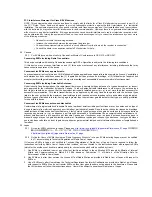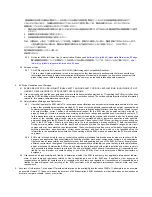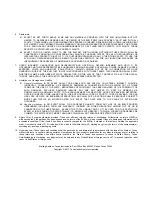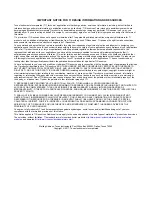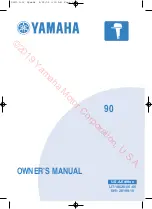
CAUTION
Caution Hot surface.
Contact may cause burns.
Do not touch.
www.ti.com
Operation and Test Setup
9
SNVU542 – July 2017
Submit Documentation Feedback
Copyright © 2017, Texas Instruments Incorporated
LMS36x5x-Q1 EVM User's Guide
4
Operation and Test Setup
4.1
Efficiency Measurement
1. Connect power supply to posts VIN1 and GND1, and verify that the power supply provides sufficient
current.
NOTE:
There is no reverse polarity protection or fuse on the evaluation board.
2. Connect electronic load to posts VOUT and GND. For all power wires, it is preferable to use twisted
lab wires to reduce inductive parasitic of lab cables. If the power supply wires are very long > 50 cm,
solder additional 470-µF, 50-V bulk capacitor to posts VIN1 and GND1. Always use sufficient power
wires and separate measurement sense wires.
NOTE:
These sense lines are not designed to carry power.
3. To accurately sense input and output voltage use the test points VINS, VOUTS, and GNDS.
Alternatively, sense wires can be soldered directly over input capacitors Cin1, Cin2, Cin3, or Cin4 and
the output capacitors Co1, Co2, Co3, and Co4.
4. Make sure the IC is enabled by having jumper J2 set to [EN-VIN] and check test point EN is driven
high. While measuring I
Q_VIN
(unloaded input current), remove all the input and output voltage probes
that are most likely causing additional current draw.
NOTE:
If the jumper J1 is set to [MODE-FPWM], the part will have a lower efficiency at light loads
by maintaining the 400-kHz switch frequency. To measure the highest light load efficiency
place the Jumper J1 in [AUTO-MODE].


















